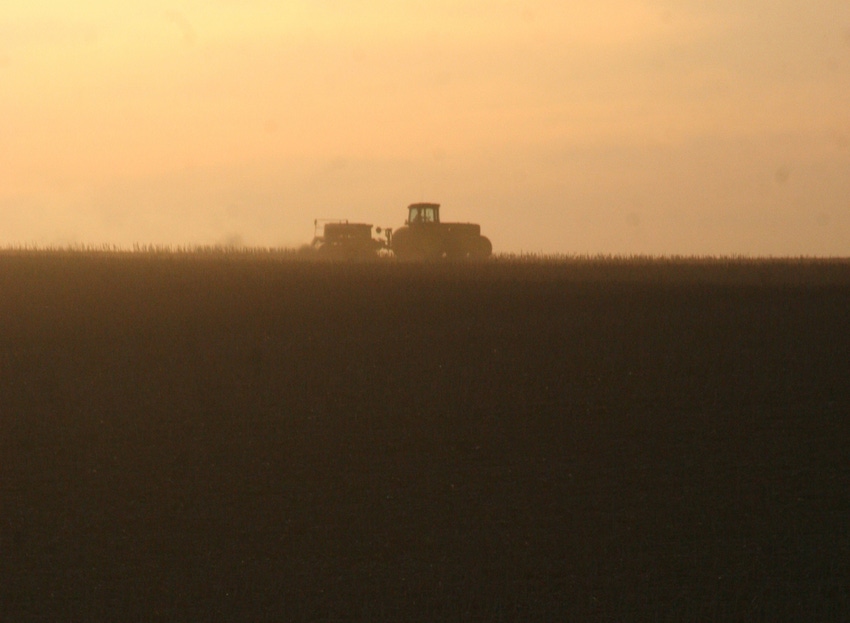
How the 40 most fuel-efficient tractors are rated
Farm Industry News has compiled a list of the 40 most fuel-efficient tractors with help from the Nebraska Tractor Test Lab and its results of tractor tests from the last 10 years. The fuel efficiency rankings were based on PTO test at rated engine speed.Tier 4 interim-compliant engines use either Selective Catalytic Reduction (SCR) or Exhausted Gas Recirculation (EGR).The galleries containing tractors 40 to 30 can be found here, 29 to 20 here, 19 to 10 here and 9 to 1 here.
November 1, 2011

Ever since tractor makers announced how they will meet the EPA’s latest round of clean air standards, claims by the Big 3 — John Deere, CNH, and AGCO — have been flying about whose tractor will be best on fuel.
AGCO, Case IH, and New Holland have claimed Selective Catalytic Reduction (SCR) technology is the best way to meet the Tier 4i emissions standards without sacrificing fuel economy. Deere, on the other hand, claims Exhaust Gas Recirculation (EGR) technology is the way to go.
“Welcome to my world,” says Roger Hoy, professor and director of the Nebraska Tractor Test Lab, the entity charged with testing performance claims of all tractors marketed in the U.S. Each month, Hoy fields dozens of phone calls from farmers wanting to know how a particular model performs on fuel.
He says confusion comes when companies use different test numbers to back their claims, preventing apples-to-apples comparisons. For example, technicians measure power and fuel use at both the PTO and drawbar and at varying rates of power and pull to replicate the full range of field conditions.
Tier 4i has only complicated the issue, Hoy says.
“A fly in the ointment is how to deal with diesel fuel expended for regenerations in an EGR system, which Deere would like to downplay, and how to deal with diesel exhaust fluid (DEF) consumed with SCR systems, which CNH and AGCO would like to downplay,” he says. See “Terms to know” below for explanations of the two systems.
Hoy helped Farm Industry News wade through these variables to come up with a Top 40 ranking on fuel. Rankings are based on the PTO test at rated engine speed, which Hoy says is a good indicator because it is one that is calculated for all tractors and it is always run at the maximum level. (However, he advises tractor buyers to consider the other test measures, too, because power and fuel use will vary depending on the intended application. See tractortestlab.unl.edu.)
The rankings include all models tested in the last 10 years, including several 2011 models equipped with Tier 4i engines.
"The actual fuel used per regeneration can vary. But we have never seen more than a quart used, and we have found the frequency of regenerations to be greater than 20 hours, not one per 10 as some competitors have assumed," Hoy says.
Ratings range from 19.00/hp-hr./gal. to 17.81. The higher the rating, the better the fuel efficiency. Assuming diesel fuel is priced at $4.00/gal., a difference of just one hp-hr./gal. point can translate into an annual cost savings of $1,300 for a 200-hp tractor used 500 hours a year, Hoy says.

With a Selective Catalytic Reduction (SCR) system, diesel exhaust fluid (DEF) is used to minimize nitrogen oxides (NOx) emissions. The rate of NOx formation is proportional to combustion temperatures, and the rate of DEF injection is related to engine loading. Higher engine loadings will consume more DEF, whereas when the engine is unloaded, the DEF rate will be near zero.
In an Exhaust Gas Recirculation (EGR) system, soot contained in the exhaust gas is captured in a diesel particulate filter, then burned off in a process called regeneration. The object of a regeneration is to heat the exhaust gas temperatures high enough to convert collected soot into ash and carbon dioxide. As engine speeds rise, there is more exhaust gas to heat and therefore more fuel required. As engine loading increases, exhaust gas temperatures from combustion are higher; because there is less of a temperature differential to overcome, less fuel is required. At times, normal exhaust gas temperatures are high enough to allow passive regeneration to occur.
Special note: Rankings include all high-hp row-crop tractors (150+ hp) tested by the Nebraska Tractor Test Lab in the last 10 years. Nearly 200 models have been tested during this timeframe, but only the top 40 made the cut for being the best models on fuel. Three of all models tested are equipped with new Tier 4i emissions-compliant engines: Case IH Magnum 340, which ranked 3rd; John Deere 8335R, which ranked 4th, and; the John Deere 8360R IVT, ranking 22nd on the list. More Tier 4i tractors will be tested in 2012, and we will rank them all again at that time.
Also note that rankings are based on the PTO test at rated engine speed, which lab director Roger Hoy says is a good indicator because it is one that is calculated for all tractors and it is always run at the maximum level. (However, he advises tractor buyers to consider the other test measures, too, because power and fuel use will vary depending on the intended application. See tractortestlab.unl.edu <http://tractortestlab.unl.edu/> .)
About the Author(s)
You May Also Like



